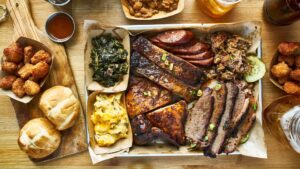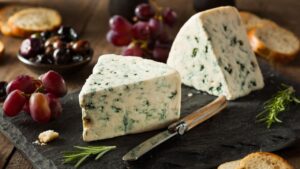Pork is one of the most popular meats in the world, loved for its rich, succulent flavor and versatility in the kitchen. However, with so many different cuts to choose from, it can be difficult to know which one to use for different dishes. Two of the most popular cuts of pork are pork roast and pork shoulder, but what’s the difference between them? In this article, we’ll take a closer look at these two cuts of meat, explore their differences, and offer tips on how to prepare and cook them.
Pork Roast vs Pork Shoulder: What’s the Difference?
Before we can talk about how to prepare and cook pork roast and pork shoulder, we need to understand what they are and how they differ.
A pork roast is a cut of meat from the loin area of the pig. It’s a lean, boneless cut that’s typically used for roasting. Pork roast can come from different parts of the loin, such as the sirloin, center loin, or tenderloin, and it can be sold with or without the skin.
On the other hand, pork shoulder comes from the front leg of the pig and is a more flavorful, fatty cut of meat. It’s also referred to as pork butt or Boston butt, although it doesn’t actually come from the pig’s rear end. Pork shoulder is sold bone-in or boneless, and it’s typically used for slow-cooking methods like braising, roasting, or smoking.
One of the key differences between a pork roast and a pork shoulder is the fat content. Pork shoulder has a higher fat content than pork roast, which makes it more flavorful and juicy, but also means it takes longer to cook. Pork roast is a leaner cut, which means it cooks faster and is a healthier option, but it can also be less flavorful than pork shoulder.
Another difference between the two cuts is the texture. Pork roast is a tender, mild-flavored cut of meat that’s well-suited for roasting or grilling. Pork shoulder, on the other hand, has a more fibrous texture that lends itself well to slow cooking methods like braising or smoking.
Comparison of Pork Roast vs Pork Shoulder
Nutritional Value
When it comes to nutrition, both pork roast and pork shoulder offer a variety of important vitamins and minerals. Pork is a rich source of protein, as well as essential vitamins and minerals like iron, zinc, and B vitamins.
However, pork roast is a leaner cut of meat than pork shoulder, which means it’s lower in calories, saturated fat, and cholesterol. A 3-ounce serving of pork roast contains about 120 calories, 3 grams of fat, and 22 grams of protein. The same serving size of pork shoulder contains about 220 calories, 15 grams of fat, and 21 grams of protein.
While pork shoulder may be higher in fat, it’s also higher in monounsaturated and polyunsaturated fats, which are considered healthier than saturated fats. These healthy fats can help improve heart health and lower cholesterol levels.
How to Prepare
Now that we know the differences between a pork roast and pork shoulder, let’s talk about how to prepare them.
To prepare pork roast, start by selecting a cut of meat that’s well-trimmed and has a good amount of marbling. Rub the roast with your choice of seasonings, such as salt, pepper, garlic, or rosemary, and let it sit at room temperature for about an hour before cooking. This will help the meat cook more evenly and result in a juicier roast.
If you’re using a bone-in roast, make sure to place the roast on the bone side down to help it cook more evenly. Roast the pork in the oven at 350 degrees Fahrenheit for about 20-25 minutes per pound, or until it reaches an internal temperature of 145 degrees Fahrenheit. Once it’s done cooking, let the roast rest for about 10-15 minutes before carving and serving.
To prepare pork shoulder, start by trimming off any excess fat and rubbing the meat with your choice of seasonings. For a classic pulled pork recipe, you can rub the pork with a mixture of salt, brown sugar, paprika, garlic powder, and black pepper. Place the pork in a roasting pan or slow cooker and cook it low and slow until it’s tender and falls apart easily. This can take anywhere from 6-8 hours in a slow cooker or 3-4 hours in a low oven at 275 degrees Fahrenheit.
Once the pork shoulder is cooked, let it rest for about 10-15 minutes before shredding it with a fork or meat claws. You can serve the pulled pork on buns with your favorite barbecue sauce and toppings, or use it as a filling for tacos or burritos.
Cooking
When it comes to cooking pork roast and pork shoulder, there are a few different methods you can use depending on your preferences and the equipment you have available.
For pork roast, the most common cooking methods are roasting and grilling. Roasting is a great option if you want to achieve a crispy exterior and a juicy, tender interior. To roast a pork roast, preheat your oven to 350 degrees Fahrenheit and roast the pork for 20-25 minutes per pound, or until it reaches an internal temperature of 145 degrees Fahrenheit. If you’re grilling a pork roast, sear it on high heat for a few minutes on each side, then move it to a cooler part of the grill and cook it for about 20-25 minutes per pound.
For pork shoulder, the most popular cooking methods are slow cooking, braising, and smoking. Slow cooking is a great option if you want the pork to be fall-apart tender and juicy. To slow cook a pork shoulder, place it in a slow cooker or Dutch oven with your choice of liquid and seasonings, and cook it on low heat for 6-8 hours, or until the meat is tender and easily shreds with a fork. Braising is a similar method, but it involves browning the meat in a pan first before simmering it in liquid for several hours. Smoking is a more advanced technique that involves cooking pork over low heat and smoking for several hours, resulting in a rich, smoky flavor.
Serving Suggestions
Once you’ve cooked your pork roast or pork shoulder, there are a variety of ways to serve it. For pork roast, try serving it with roasted vegetables, mashed potatoes, or a simple salad. You can also use the leftovers to make sandwiches or tacos.
For pork shoulder, pulled pork sandwiches are a classic option, but you can also use the meat as a filling for quesadillas, nachos, or pizza. Serve the pulled pork with coleslaw, pickles, and your favorite barbecue sauce for a delicious, satisfying meal.
Conclusion
In conclusion, pork roast and pork shoulder are both delicious cuts of meat with different flavor profiles and cooking methods. Pork roast is a leaner, milder cut that’s perfect for roasting or grilling, while pork shoulder is a more flavorful, fatty cut that’s ideal for slow cooking methods like braising, roasting, or smoking. By understanding the differences between these two cuts





